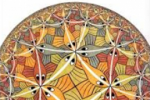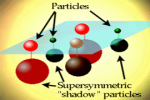String theory and gauge/gravity duality
String theory is a consistent theory of quantum gravity - the only one known so far. However, so far we only have a non-perturbative formulation of this theory on a limited class of space-times which have specific types of boundaries, using the gauge/gravity duality and its generalizations. And even this duality has not yet been derived (though there is substantial evidence that it is true). Can we generalize the gauge/gravity duality to more general situations, for instance to weakly coupled field theories which should be dual to backgrounds with light high-spin fields ("high-spin gravities") ? Can this help us to derive the gauge/gravity duality, namely construct the mapping between the field theory degrees of freedom and those of the gravitational theory (such as string theory) ? Can we find a non-perturbative formulation for string theory on more general backgrounds, such as flat space or de Sitter space ?







